Abstract
Products of the nodule cytosol in vivo dark [14C]CO2 fixation were detected in the plant cytosol as well as in the bacteroids of pea (Pisum sativum L. cv “Bodil”) nodules. The distribution of the metabolites of the dark CO2 fixation products was compared in effective (fix+) nodules infected by a wild-type Rhizobium leguminosarum (MNF 300), and ineffective (fix−) nodules of the R. leguminosarum mutant MNF 3080. The latter has a defect in the dicarboxylic acid transport system of the bacterial membrane. The 14C incorporation from [14C]CO2 was about threefold greater in the wild-type nodules than in the mutant nodules. Similarly, in wild-type nodules the in vitro phosphoenolpyruvate carboxylase activity was substantially greater than that of the mutant. Almost 90% of the 14C label in the cytosol was found in organic acids in both symbioses. Malate comprised about half of the total cytosol organic acid content on a molar basis, and more than 70% of the cytosol radioactivity in the organic acid fraction was detected in malate in both symbioses. Most of the remaining 14C was contained in the amino acid fraction of the cytosol in both symbioses. More than 70% of the 14C label found in the amino acids of the cytosol was incorporated in aspartate, which on a molar basis comprised only about 1% of the total amino acid pool in the cytosol. The extensive 14C labeling of malate and aspartate from nodule dark [14C]CO2 fixation is consistent with the role of phosphoenolpyruvate carboxlase in nodule dark CO2 fixation. Bacteroids from the effective wild-type symbiosis accumulated sevenfold more 14C than did the dicarboxylic acid transport defective bacteroids. The bacteroids of the effective MNF 300 symbiosis contained the largest proportion of the incorporated 14C in the organic acids, whereas ineffective MNF 3080 bacteroids mainly contained 14C in the amino acid fraction. In both symbioses a larger proportion of the bacteroid 14C label was detected in malate and aspartate than their corresponding proportions of the organic acids and amino acids on a molar basis. The proportion of 14C label in succinate, 2-oxogultarate, citrate, and fumarate in the bacteroids of the wild type greatly exceeded that of the dicarboxylate uptake mutant. The results indicate a central role for nodule cytosol dark CO2 fixation in the supply of the bacteroids with dicarboxylic acids.
Full text
PDF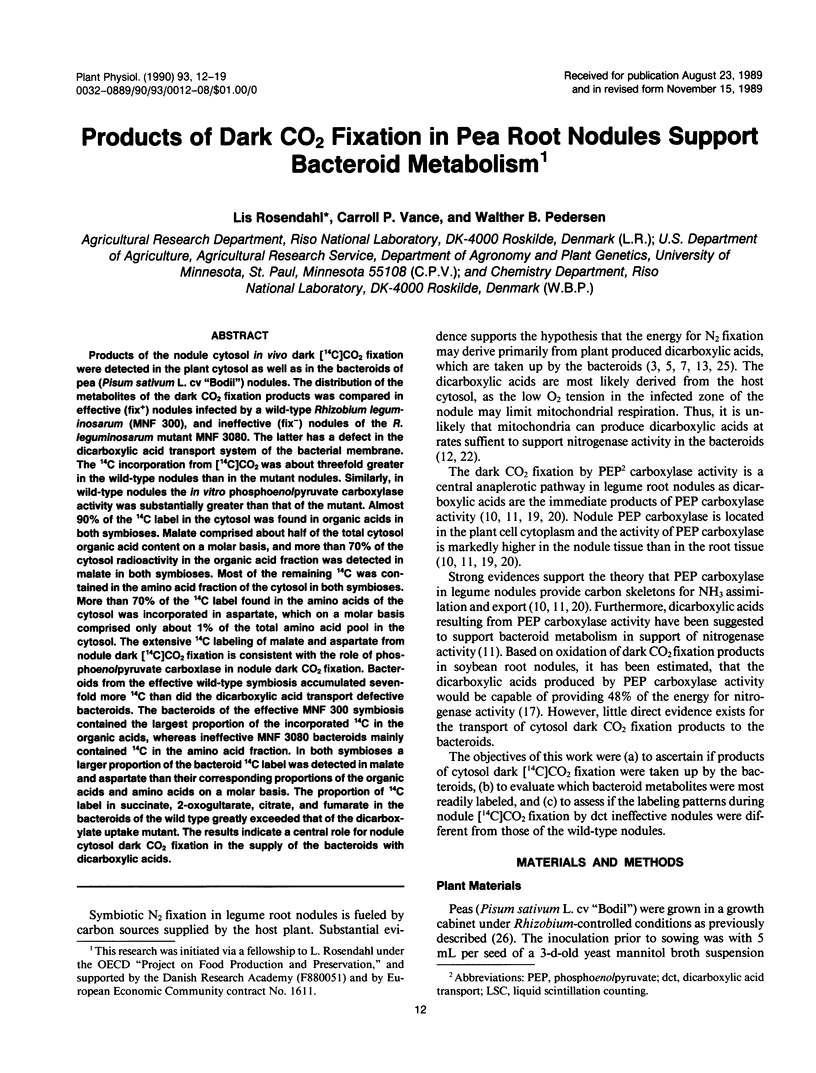
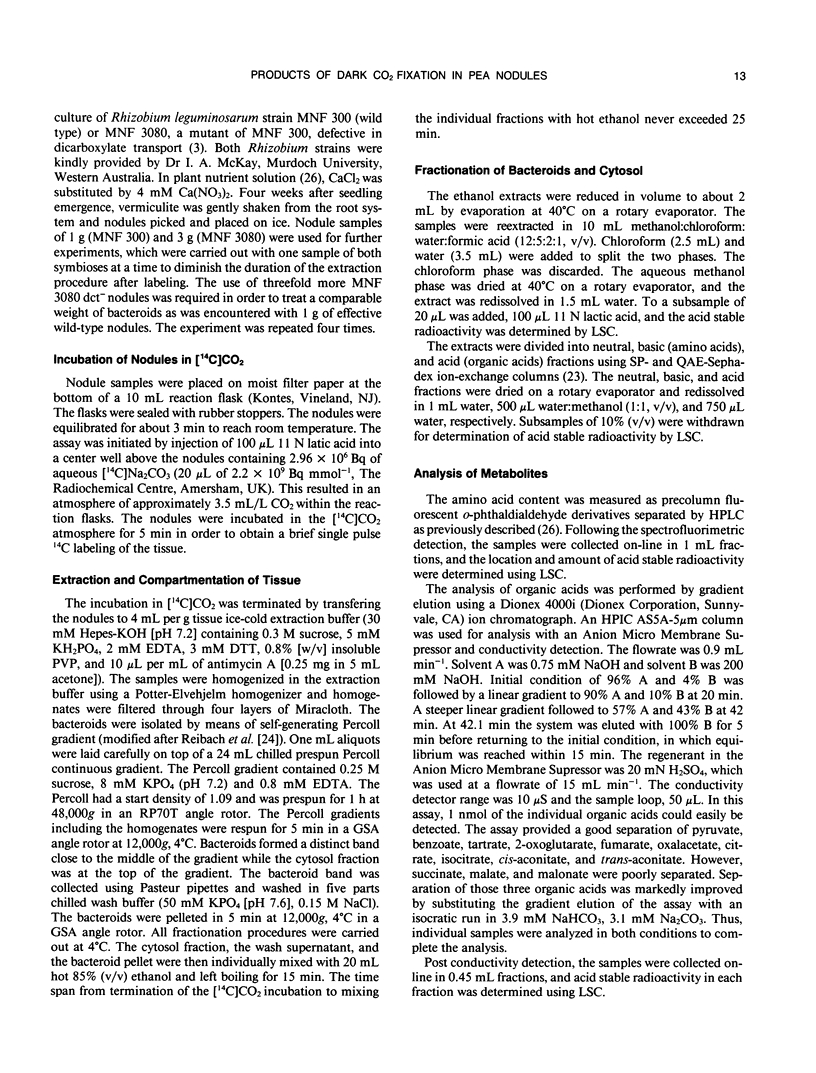
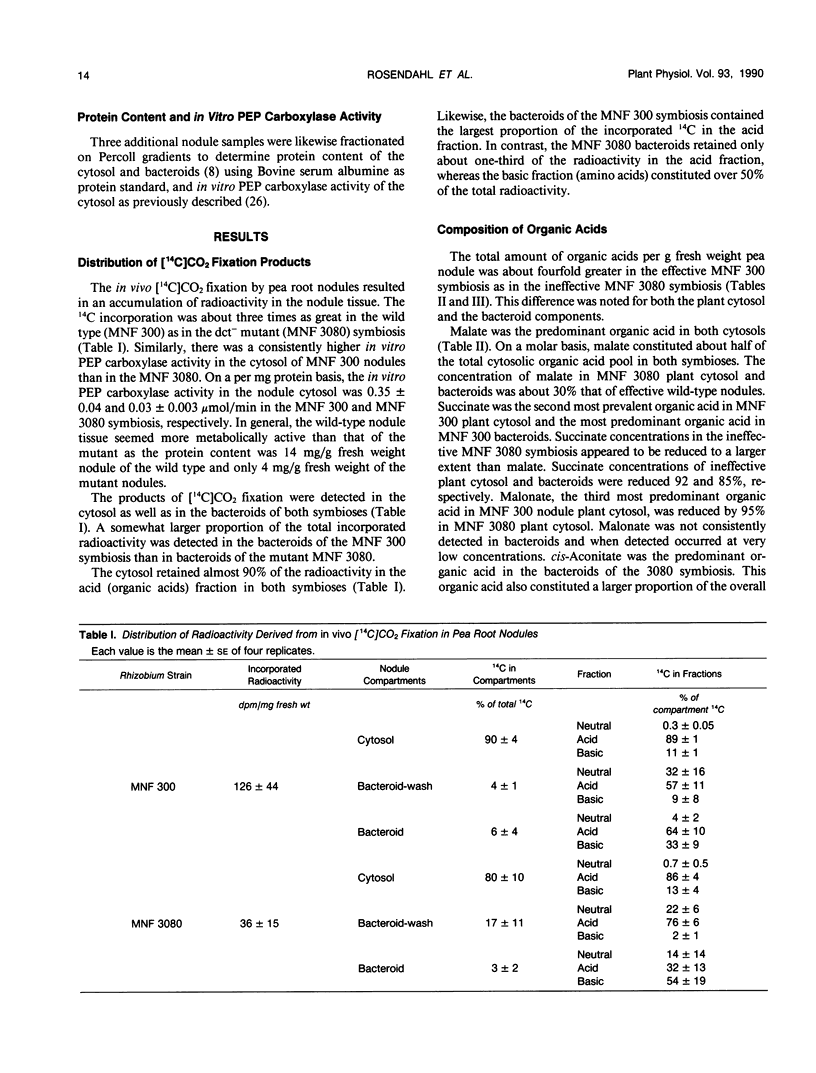
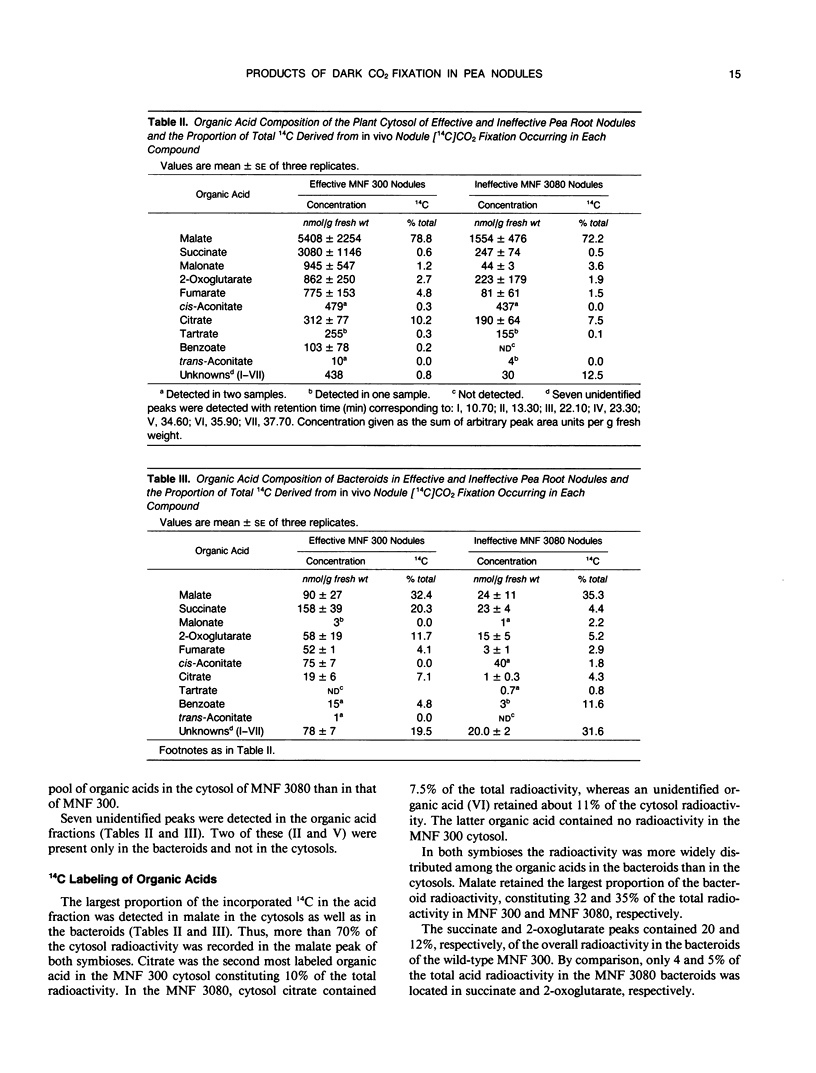
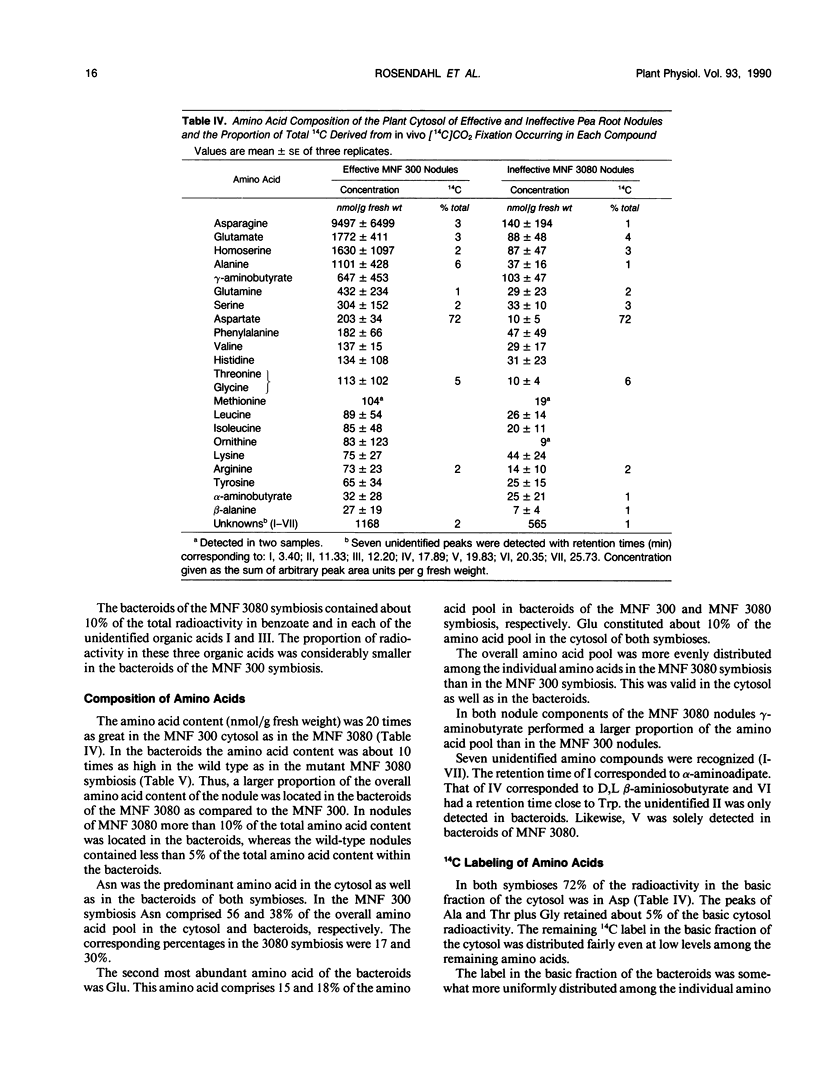
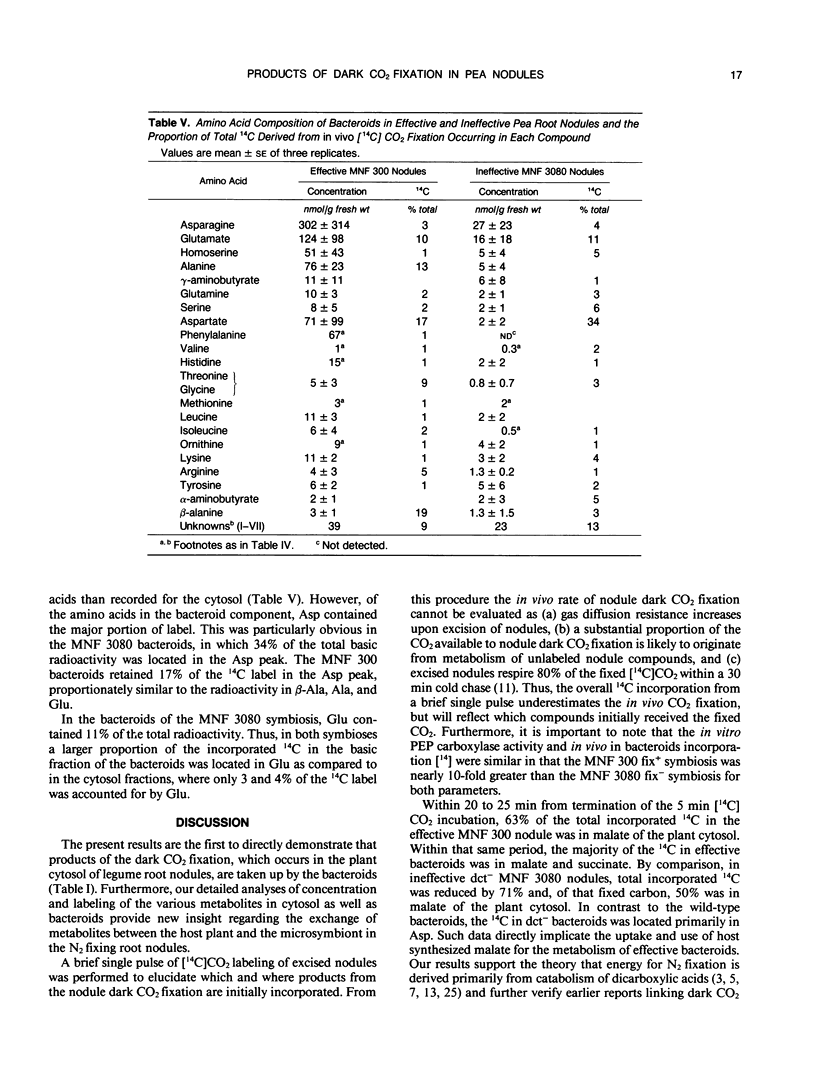
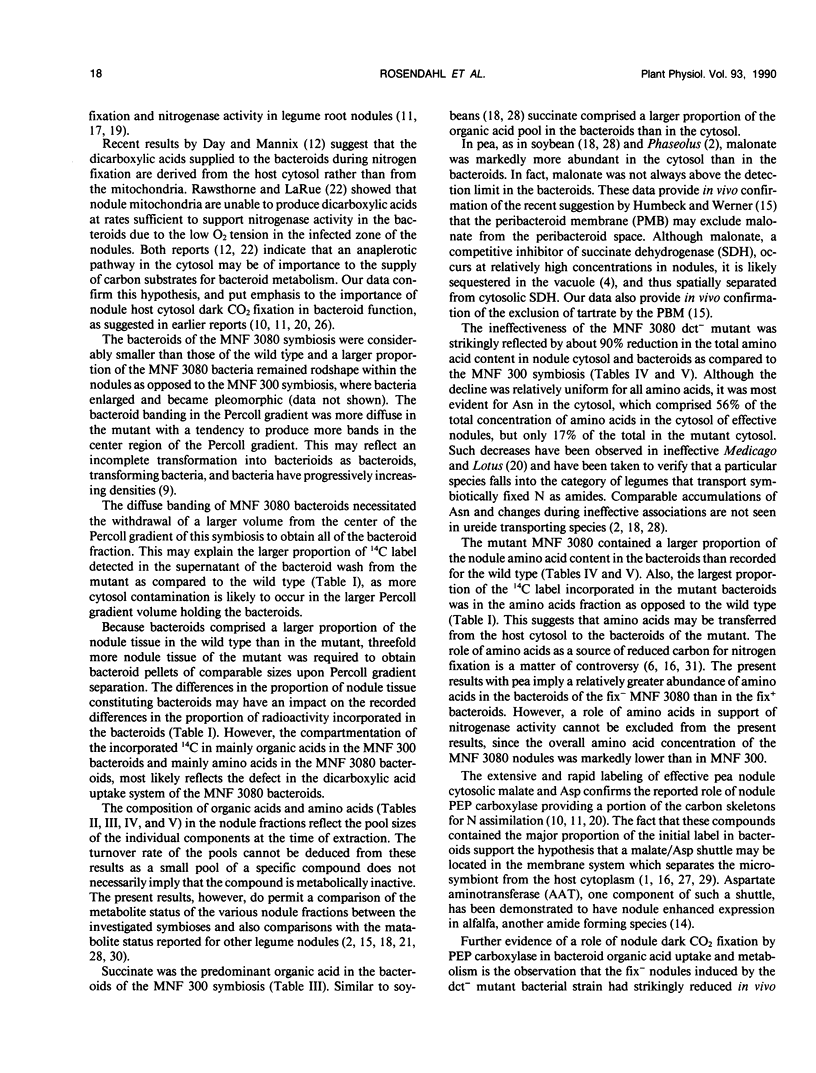
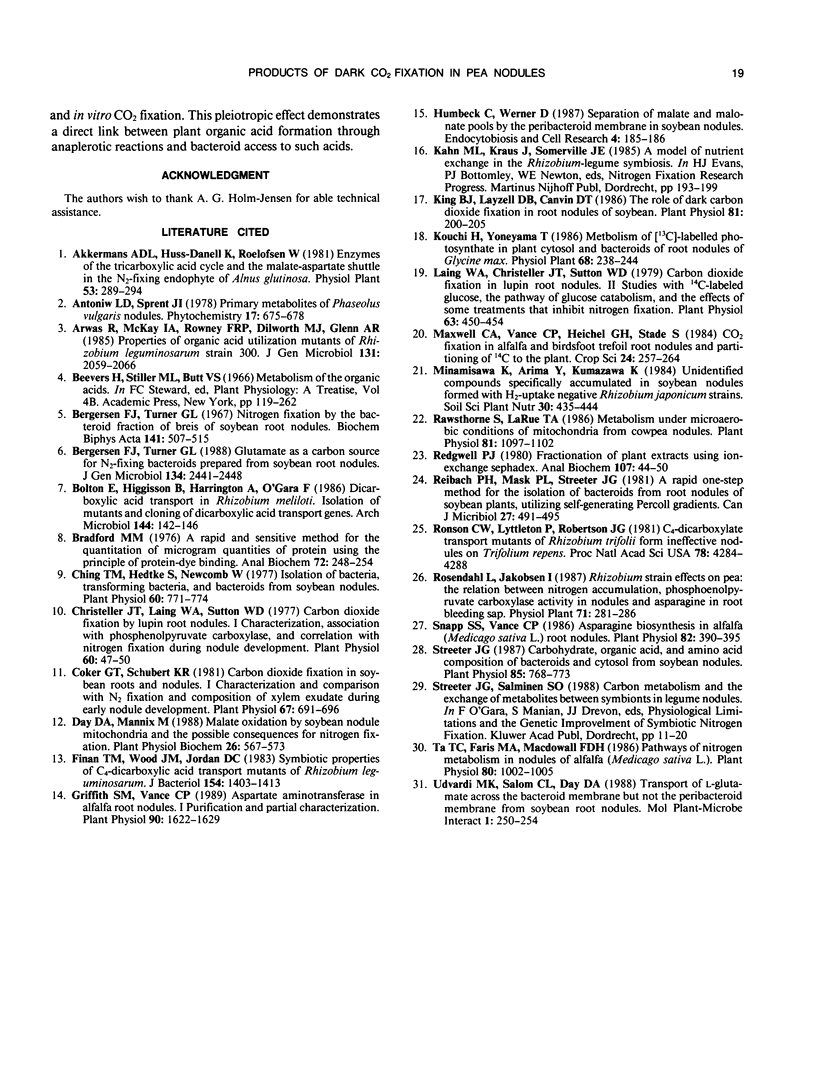
Selected References
These references are in PubMed. This may not be the complete list of references from this article.
- Bergersen J. F., Turner G. L. Nitrogen fixation by the bacteroid fraction of breis of soybean root nodules. Biochim Biophys Acta. 1967 Aug 29;141(3):507–515. doi: 10.1016/0304-4165(67)90179-1. [DOI] [PubMed] [Google Scholar]
- Bradford M. M. A rapid and sensitive method for the quantitation of microgram quantities of protein utilizing the principle of protein-dye binding. Anal Biochem. 1976 May 7;72:248–254. doi: 10.1016/0003-2697(76)90527-3. [DOI] [PubMed] [Google Scholar]
- Ching T. M., Hedtke S. Isolation of bacteria, transforming bacteria, and bacteroids from soybean nodules. Plant Physiol. 1977 Nov;60(5):771–774. doi: 10.1104/pp.60.5.771. [DOI] [PMC free article] [PubMed] [Google Scholar]
- Christeller J. T., Laing W. A., Sutton W. D. Carbon Dioxide Fixation by Lupin Root Nodules: I. Characterization, Association with Phosphoenolpyruvate Carboxylase, and Correlation with Nitrogen Fixation during Nodule Development. Plant Physiol. 1977 Jul;60(1):47–50. doi: 10.1104/pp.60.1.47. [DOI] [PMC free article] [PubMed] [Google Scholar]
- Coker G. T., Schubert K. R. Carbon Dioxide Fixation in Soybean Roots and Nodules: I. CHARACTERIZATION AND COMPARISON WITH N(2) FIXATION AND COMPOSITION OF XYLEM EXUDATE DURING EARLY NODULE DEVELOPMENT. Plant Physiol. 1981 Apr;67(4):691–696. doi: 10.1104/pp.67.4.691. [DOI] [PMC free article] [PubMed] [Google Scholar]
- Finan T. M., Wood J. M., Jordan D. C. Symbiotic properties of C4-dicarboxylic acid transport mutants of Rhizobium leguminosarum. J Bacteriol. 1983 Jun;154(3):1403–1413. doi: 10.1128/jb.154.3.1403-1413.1983. [DOI] [PMC free article] [PubMed] [Google Scholar]
- Griffith S. M., Vance C. P. Aspartate aminotransferase in alfalfa root nodules : I. Purification and partial characterization. Plant Physiol. 1989 Aug;90(4):1622–1629. doi: 10.1104/pp.90.4.1622. [DOI] [PMC free article] [PubMed] [Google Scholar]
- King B. J., Layzell D. B., Canvin D. T. The role of dark carbon dioxide fixation in root nodules of soybean. Plant Physiol. 1986 May;81(1):200–205. doi: 10.1104/pp.81.1.200. [DOI] [PMC free article] [PubMed] [Google Scholar]
- Laing W. A., Christeller J. T., Sutton W. D. Carbon Dioxide Fixation by Lupin Root Nodules: II. Studies with C-labeled Glucose, the Pathway of Glucose Catabolism, and the Effects of Some Treatments That Inhibit Nitrogen Fixation. Plant Physiol. 1979 Mar;63(3):450–454. doi: 10.1104/pp.63.3.450. [DOI] [PMC free article] [PubMed] [Google Scholar]
- Rawsthorne S., Larue T. A. Metabolism under Microaerobic Conditions of Mitochondria from Cowpea Nodules. Plant Physiol. 1986 Aug;81(4):1097–1102. doi: 10.1104/pp.81.4.1097. [DOI] [PMC free article] [PubMed] [Google Scholar]
- Redgwell R. J. Fractionation of plant extracts using ion-exchange Sephadex. Anal Biochem. 1980 Sep 1;107(1):44–50. doi: 10.1016/0003-2697(80)90489-3. [DOI] [PubMed] [Google Scholar]
- Reibach P. H., Mask P. L., Streeter J. G. A rapid one-step method for the isolation of bacteroids from root nodules of soybean plants, utilizing self-generating Percoll gradients. Can J Microbiol. 1981 May;27(5):491–495. doi: 10.1139/m81-072. [DOI] [PubMed] [Google Scholar]
- Ronson C. W., Lyttleton P., Robertson J. G. C(4)-dicarboxylate transport mutants of Rhizobium trifolii form ineffective nodules on Trifolium repens. Proc Natl Acad Sci U S A. 1981 Jul;78(7):4284–4288. doi: 10.1073/pnas.78.7.4284. [DOI] [PMC free article] [PubMed] [Google Scholar]
- Snapp S. S., Vance C. P. Asparagine Biosynthesis in Alfalfa (Medicago sativa L.) Root Nodules. Plant Physiol. 1986 Oct;82(2):390–395. doi: 10.1104/pp.82.2.390. [DOI] [PMC free article] [PubMed] [Google Scholar]
- Streeter J. G. Carbohydrate, organic Acid, and amino Acid composition of bacteroids and cytosol from soybean nodules. Plant Physiol. 1987 Nov;85(3):768–773. doi: 10.1104/pp.85.3.768. [DOI] [PMC free article] [PubMed] [Google Scholar]
- Ta T. C., Faris M. A., Macdowall F. D. Pathways of Nitrogen Metabolism in Nodules of Alfalfa (Medicago sativa L.). Plant Physiol. 1986 Apr;80(4):1002–1005. doi: 10.1104/pp.80.4.1002. [DOI] [PMC free article] [PubMed] [Google Scholar]


